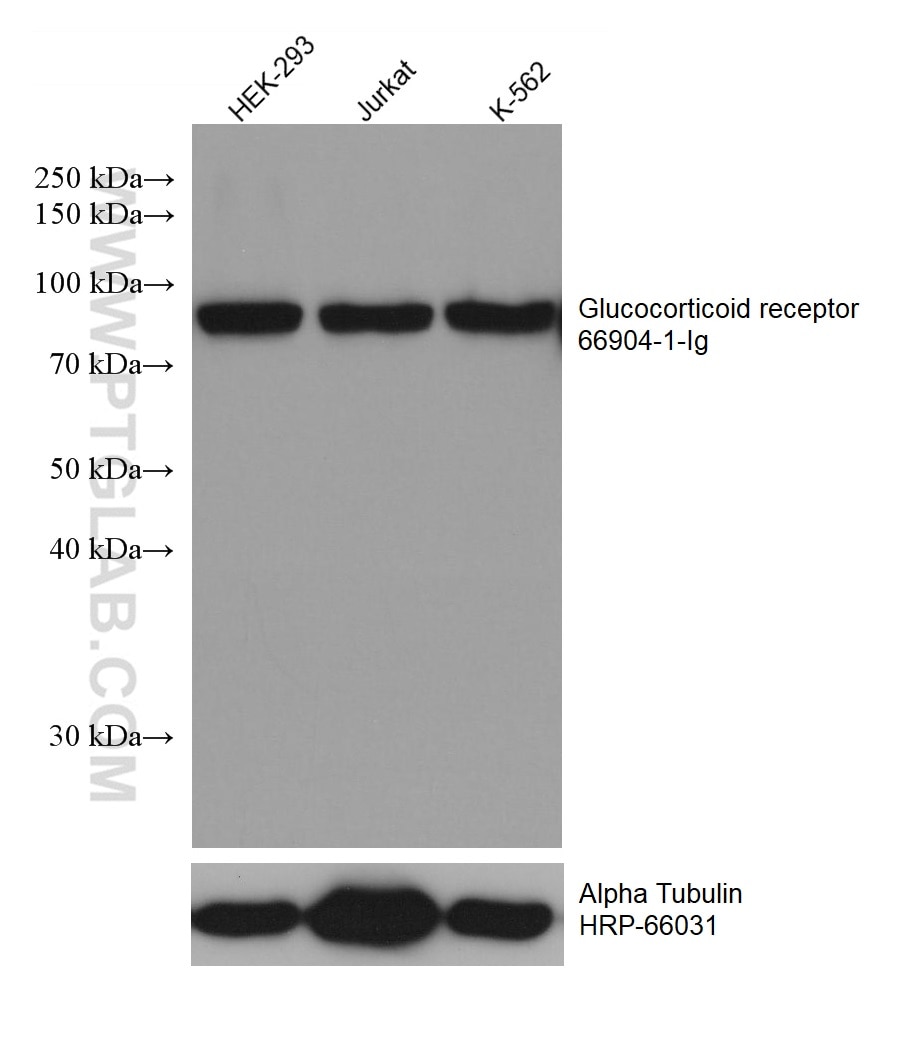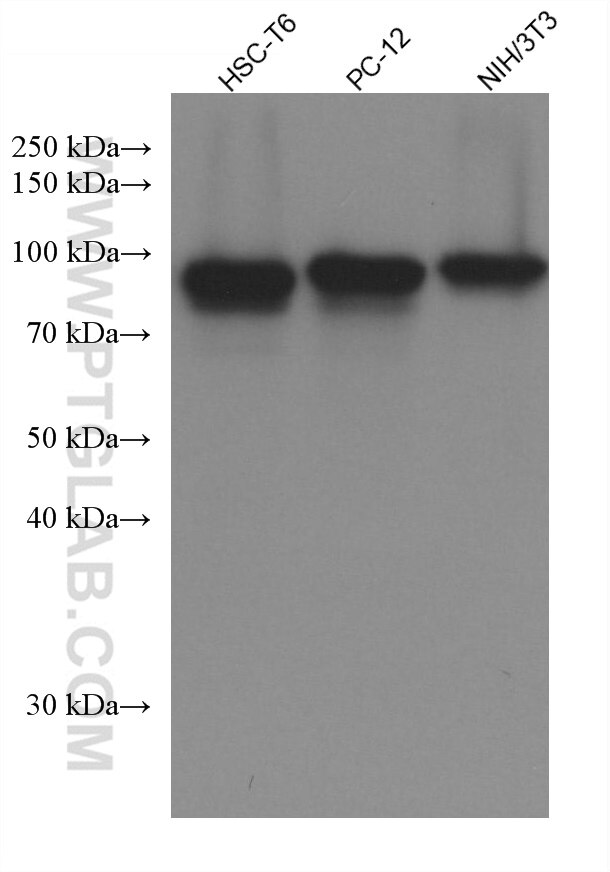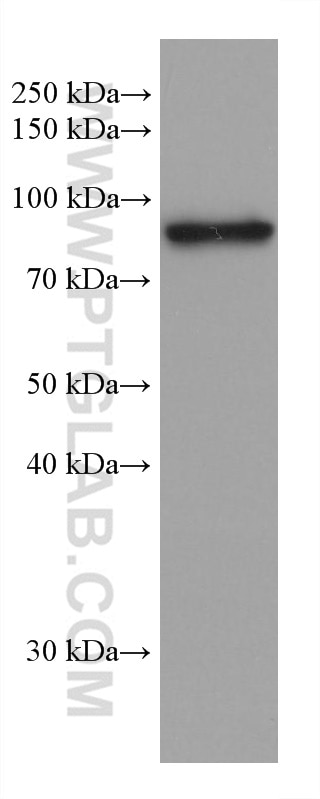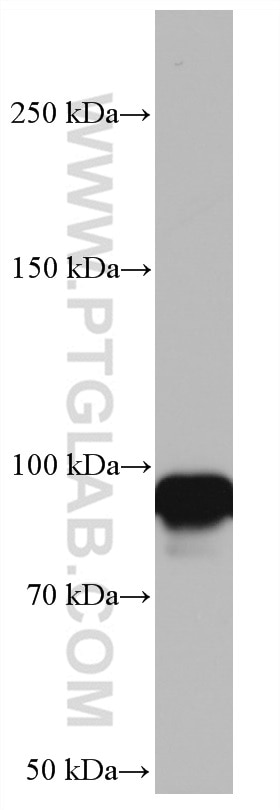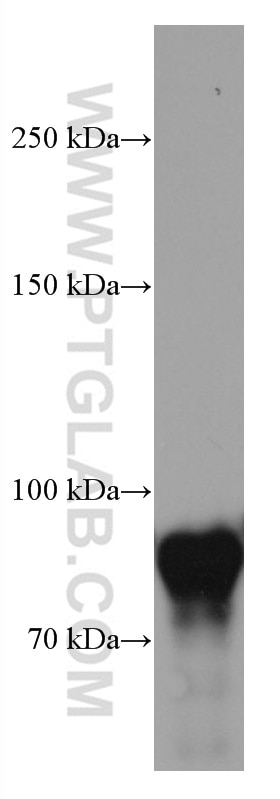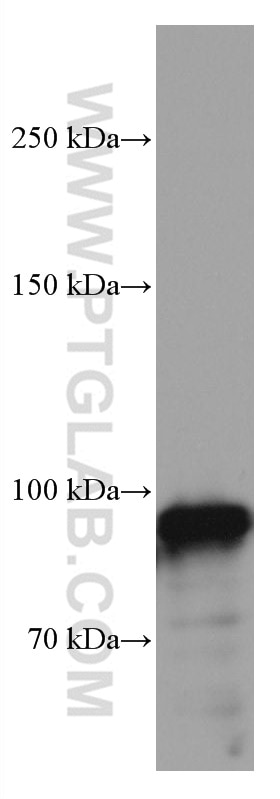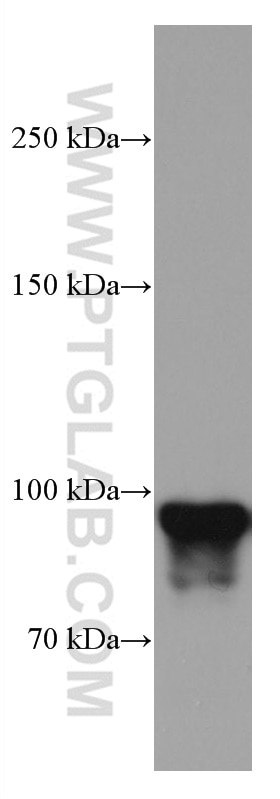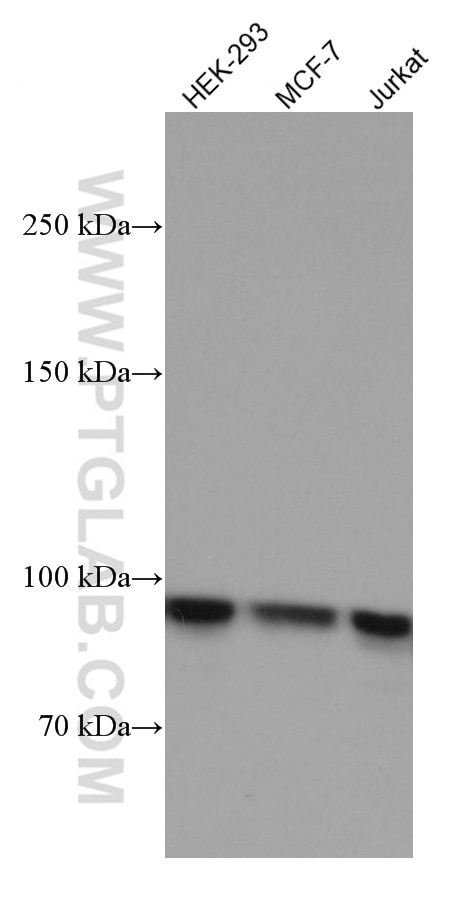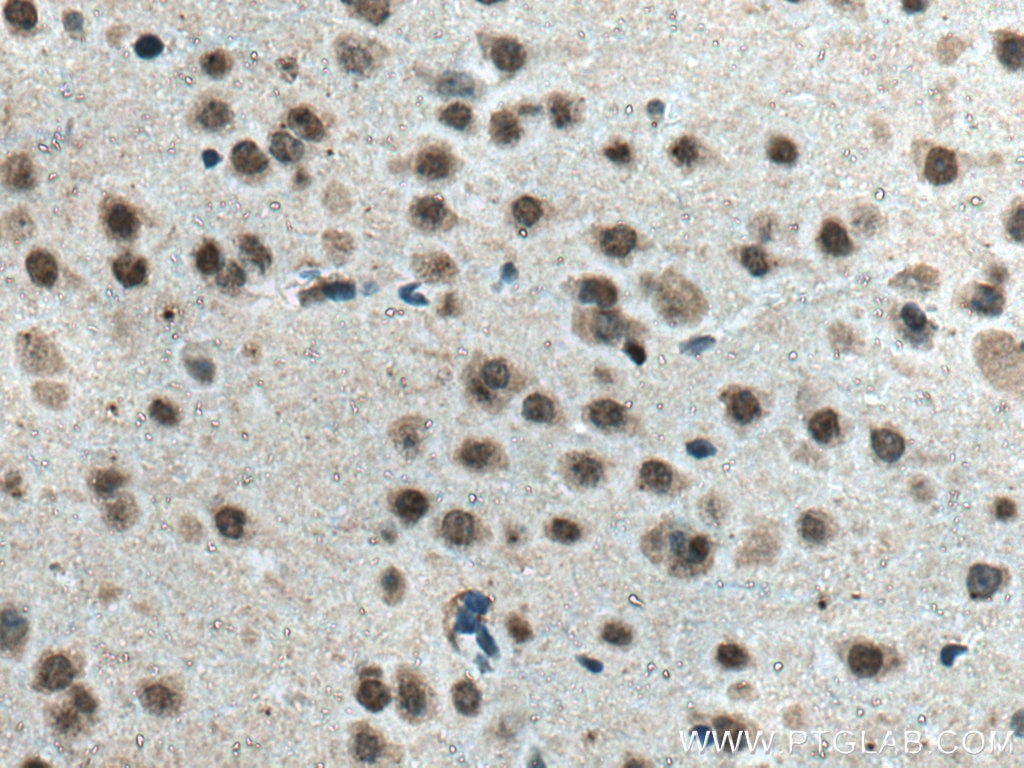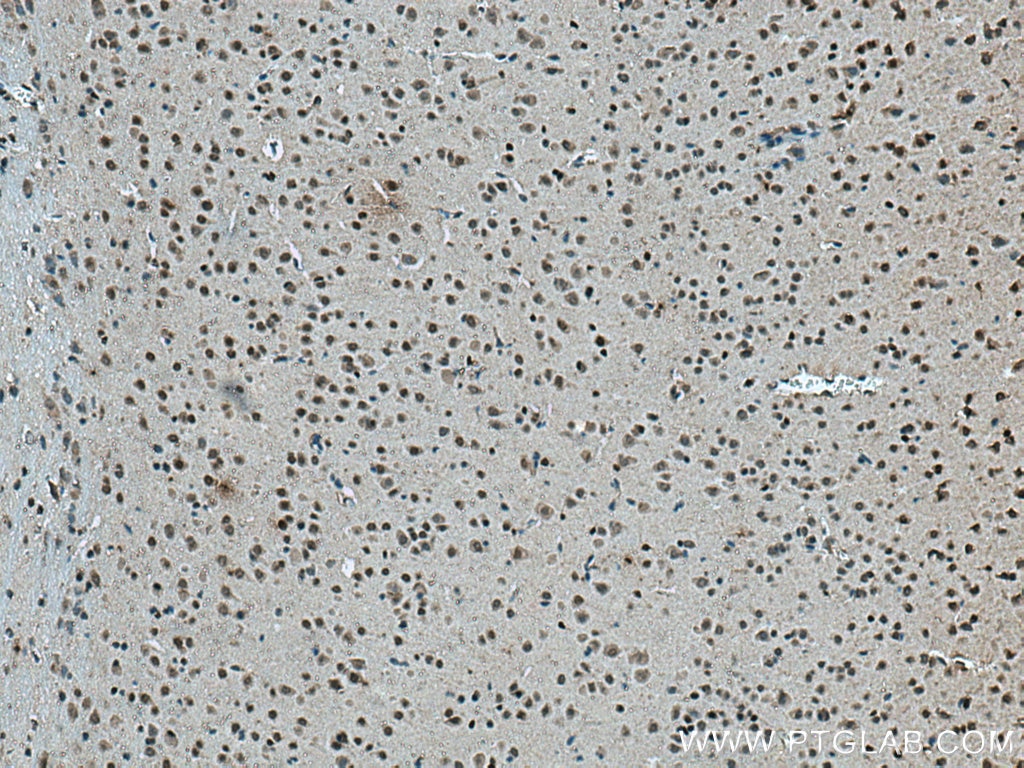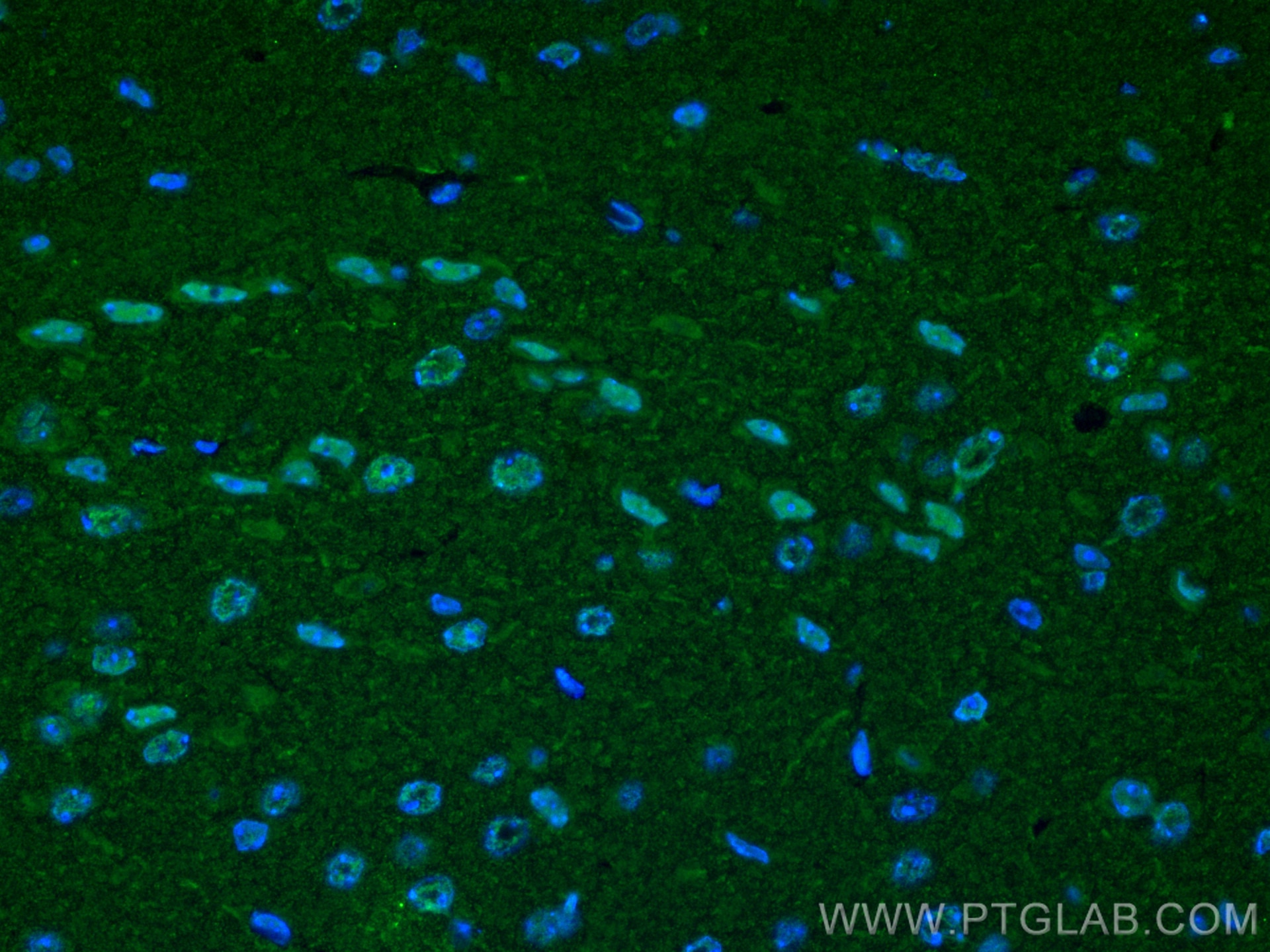Glucocorticoid receptor Monoklonaler Antikörper
Glucocorticoid receptor Monoklonal Antikörper für WB, IHC, IF-P, ELISA
Wirt / Isotyp
Maus / IgG1
Getestete Reaktivität
human, Maus, Ratte
Anwendung
WB, IHC, IF-P, ELISA
Konjugation
Unkonjugiert
CloneNo.
1D9A9
Kat-Nr. : 66904-1-Ig
Synonyme
Geprüfte Anwendungen
| Erfolgreiche Detektion in WB | HEK-293-Zellen, 4T1-Zellen, HeLa-Zellen, HepG2-Zellen, Jurkat-Zellen, K-562-Zellen, MCF-7-Zellen, NIH/3T3-Zellen, PC-12-Zellen |
| Erfolgreiche Detektion in IHC | Maushirngewebe Hinweis: Antigendemaskierung mit TE-Puffer pH 9,0 empfohlen. (*) Wahlweise kann die Antigendemaskierung auch mit Citratpuffer pH 6,0 erfolgen. |
| Erfolgreiche Detektion in IF-P | Maushirngewebe |
Empfohlene Verdünnung
| Anwendung | Verdünnung |
|---|---|
| Western Blot (WB) | WB : 1:20000-1:100000 |
| Immunhistochemie (IHC) | IHC : 1:150-1:600 |
| Immunfluoreszenz (IF)-P | IF-P : 1:200-1:800 |
| It is recommended that this reagent should be titrated in each testing system to obtain optimal results. | |
| Sample-dependent, check data in validation data gallery | |
Veröffentlichte Anwendungen
| WB | See 5 publications below |
| IHC | See 2 publications below |
| IF | See 2 publications below |
Produktinformation
66904-1-Ig bindet in WB, IHC, IF-P, ELISA Glucocorticoid receptor und zeigt Reaktivität mit human, Maus, Ratten
| Getestete Reaktivität | human, Maus, Ratte |
| In Publikationen genannte Reaktivität | human, Maus |
| Wirt / Isotyp | Maus / IgG1 |
| Klonalität | Monoklonal |
| Typ | Antikörper |
| Immunogen | Glucocorticoid receptor fusion protein Ag28431 |
| Vollständiger Name | nuclear receptor subfamily 3, group C, member 1 (glucocorticoid receptor) |
| Berechnetes Molekulargewicht | 86 kDa |
| Beobachtetes Molekulargewicht | 97 kDa |
| GenBank-Zugangsnummer | BC015610 |
| Gene symbol | Glucocorticoid receptor |
| Gene ID (NCBI) | 2908 |
| Konjugation | Unkonjugiert |
| Form | Liquid |
| Reinigungsmethode | Protein-G-Reinigung |
| Lagerungspuffer | PBS with 0.02% sodium azide and 50% glycerol |
| Lagerungsbedingungen | Bei -20°C lagern. Nach dem Versand ein Jahr lang stabil Aliquotieren ist bei -20oC Lagerung nicht notwendig. 20ul Größen enthalten 0,1% BSA. |
Hintergrundinformationen
Glucocorticoid receptor (GR, or GCR) also known as NR3C1 (nuclear receptor subfamily 3, group C, member 1) is a receptor for glucocorticoids, which owns a dual mode of action: as a transcription factor that binds to glucocorticoid response elements (GRE) and as a modulator of other transcription factors. It is involved in cell proliferation and differentiation and specifically implicated in newborn birth weight, thus providing a biological mechanism by which NR3C1 expression may influence birth weight (PMID:22810058).
Protokolle
| PRODUKTSPEZIFISCHE PROTOKOLLE | |
|---|---|
| WB protocol for Glucocorticoid receptor antibody 66904-1-Ig | Protokoll herunterladen |
| IHC protocol for Glucocorticoid receptor antibody 66904-1-Ig | Protokoll herunterladenl |
| IF protocol for Glucocorticoid receptor antibody 66904-1-Ig | Protokoll herunterladen |
| STANDARD-PROTOKOLLE | |
|---|---|
| Klicken Sie hier, um unsere Standardprotokolle anzuzeigen |
Publikationen
| Species | Application | Title |
|---|---|---|
Antioxidants (Basel) Continuous Monochromatic Blue Light Exacerbates High-Fat Diet-Induced Kidney Injury via Corticosterone-Mediated Oxidative Stress | ||
Am J Physiol Cell Physiol Dual-Specificity Phosphatase 29 is Induced During Neurogenic Skeletal Muscle Atrophy and Attenuates Glucocorticoid Receptor Activity in Muscle Cell Culture. | ||
Heliyon Comparison of CUMS at different pregnancy stages, maternal separation, and their effects on offspring in postpartum depression mouse models | ||
Cell Death Dis Targeting EGFR-binding protein SLC7A11 enhancing antitumor immunity of T cells via inducing MHC-I antigen presentation in nasopharyngeal carcinoma | ||
J Neuroendocrinol Corticosteroid-regulated gene transcription in SH-SY5Y-derived neurons: Insights into the mineralocorticoid and glucocorticoid receptor-mediated response | ||
Ecotoxicol Environ Saf Dim blue light at night worsens high-fat diet-induced kidney damage via increasing corticosterone levels and modulating the expression of circadian clock genes |
Rezensionen
The reviews below have been submitted by verified Proteintech customers who received an incentive for providing their feedback.
FH Shubham (Verified Customer) (04-15-2019) | Good
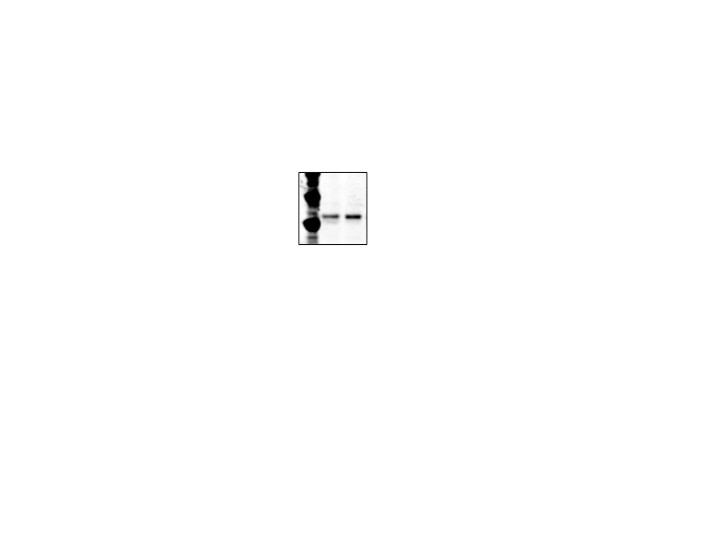 |
